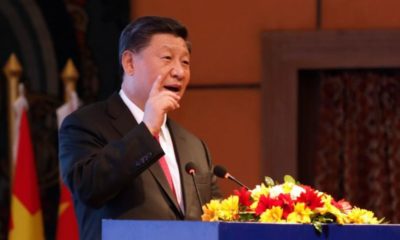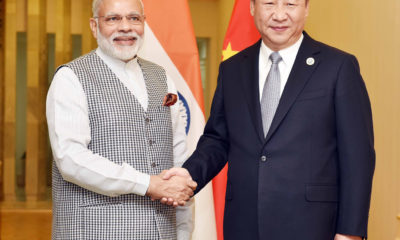World
Leaders hail inauguration of Central Asia’s longest railway tunnel
Tashkent: Visiting Chinese President Xi Jinping and his Uzbek counterpart, Islam Karimov, hailed the inauguration of the Qamchiq Tunnel in Uzbekistan, the longest in Central Asia.
The two leaders on Wednesday watched via video link the opening of the 19.2-km railway tunnel, which is part of the Angren-Pap railway line that connects capital Tashkent and Namangan, the Global Times reported.
Built by the China Railway Tunnel Group, the tunnel goes through Qurama mountains. Construction on the project began in 2013 and was completed in February this year.
“It is a major achievement of the Belt and Road Initiative that China and Uzbekistan are jointly promoting, and also a new link of friendship and cooperation connecting the peoples of both countries,” Xi said.
He said that land transport connectivity is an important part of the Belt and Road Initiative and a key area in China-Uzbekistan cooperation.
“China is willing to strengthen cooperation with Uzbekistan to constantly improve the connectivity of the infrastructure in the region, thus creating more favorable environment for the development of our two countries and bringing greater benefits to both peoples,” he said.
The Belt and Road Initiative, proposed by Xi in 2013, refers to the Silk Road Economic Belt and the 21st Century Maritime Silk Road. It is a development initiative aimed at boosting trade and investment cooperation primarily through enhancing infrastructure connectivity.
Karimov said the inauguration of the railway tunnel is a major event in the economic and social development of Uzbekistan, which greatly benefits the Uzbek people. He expressed gratitude to China for its assistance.
The Chinese president arrived in Uzbekistan for a state visit on Tuesday. It is the third and final stop of Xi’s three-nation tour, which has also taken him to Serbia and Poland.
World
Lockdowns in China Force Urban Communities to Defy Censorship and Vent Frustration Online

Shanghai’s rich middle class is leading a wave of online dissent over the strict and prolonged lockdowns imposed in various parts of the country. Chinese internet censorship is struggling as patience is wearing thin in many urban centers, coming up with creative forms of online protests.
Social Media Posts Revealing Lockdown Tension in Shanghai
Drawn-out lockdowns are nothing new in China as authorities insist with the nation’s zero-Covid policy since the start of the pandemic. Currently over This time around, however, metropolitan areas like Shanghai are increasingly difficult to keep quiet, given that its more than 25 million residents have seen weeks of total isolation along with food shortages and many other service interruptions.
Dozens of towns and reportedly over 300 million Chinese citizens have been affected by lockdowns of different severity. As expected, urban netizens have been most outspoken over their difficulties by finding creative ways to get around state censorship and bans placed on topics, news comments and spontaneous campaigns.
Shanghai residents have been using mobile proxies and hijacking seemingly unrelated hashtags to talk about healthcare issues, delivery failures and the overall severity of their situation. The “positive energy” that the Chinese government wants to transmit during the recent prolonged series of lockdowns does not come naturally to those counting food supplies and online censors are working hard to filter words, trending topics and undesired social media sharing.
WeChat groups and message threads are under constant monitoring. Posts questioning the zero-Covid approach have been quickly deleted, including by leading Chinese health experts like Dr. Zhong Nanshan. Video footage is soon censored and protests and investigations are quickly made to disappear.
Where this has not worked, officials have exposed banners with warnings and outright threats like “watch your own mouth or face punishment”, while drones have been patrolling the city skies. Yet, if anything, this has led to further tensions and unspoken confrontation with Shanghai’s educated and affluent middle class.
Creative Online Solutions Harnessing Civic Energy
Announcements by Chinese social media that they would be publishing the IP addresses of users who “spread rumors” have not helped either. Tech industry research has shown that much of Asia’s tech-savvy population has a habit of using mobile proxies and other privacy tools, quickly finding workarounds to browse the internet freely and talk to the world about the hottest topics.
The sheer volume of forbidden posts is already a challenge for the very censorship system, experts explain. Unable to track all trending hashtags, state workers overlook topics that speak about the US, Ukraine or other popular news. Linking human rights elsewhere to their situation, Chinese online dissidents establish their informal channels and “hijack” the conversation to share personal or publicly relevant information about the Covid suppression in their town.
Sarcastic and satirical posts still dominate. Others hope to evade the censors by replacing words from famous poems or the national anthem. One thing is certain – social media, when harnessed with the right creativity, has proven its ability to mount pressure on the government in even some of the most strictly controlled tech environments like China.
























